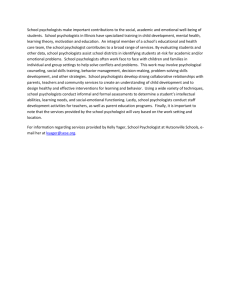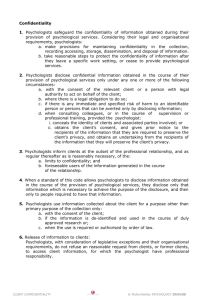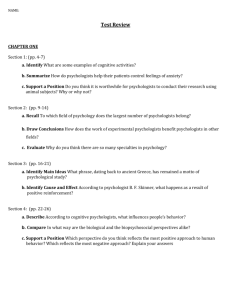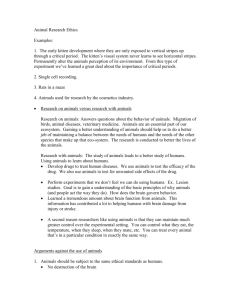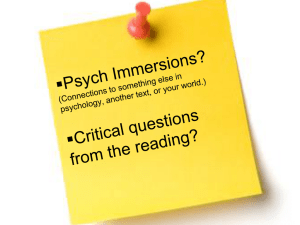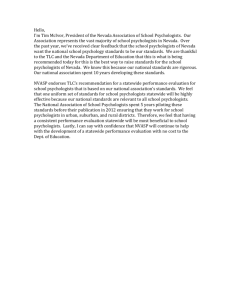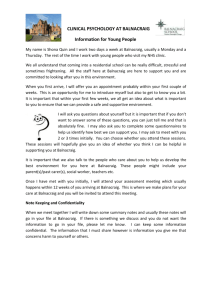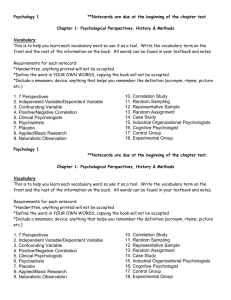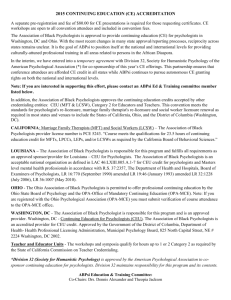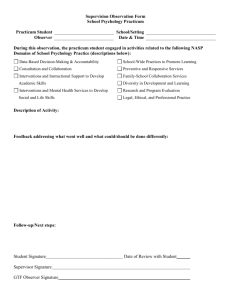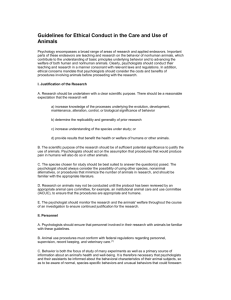Empowering development conference notes_Closing Discussion
advertisement
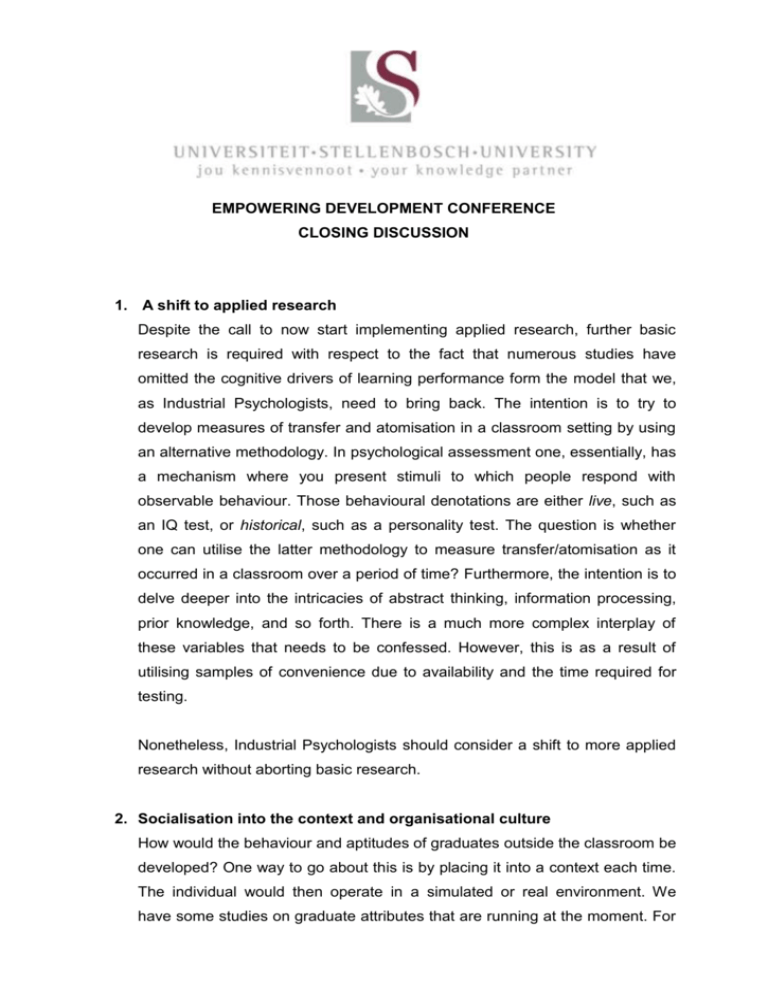
EMPOWERING DEVELOPMENT CONFERENCE CLOSING DISCUSSION 1. A shift to applied research Despite the call to now start implementing applied research, further basic research is required with respect to the fact that numerous studies have omitted the cognitive drivers of learning performance form the model that we, as Industrial Psychologists, need to bring back. The intention is to try to develop measures of transfer and atomisation in a classroom setting by using an alternative methodology. In psychological assessment one, essentially, has a mechanism where you present stimuli to which people respond with observable behaviour. Those behavioural denotations are either live, such as an IQ test, or historical, such as a personality test. The question is whether one can utilise the latter methodology to measure transfer/atomisation as it occurred in a classroom over a period of time? Furthermore, the intention is to delve deeper into the intricacies of abstract thinking, information processing, prior knowledge, and so forth. There is a much more complex interplay of these variables that needs to be confessed. However, this is as a result of utilising samples of convenience due to availability and the time required for testing. Nonetheless, Industrial Psychologists should consider a shift to more applied research without aborting basic research. 2. Socialisation into the context and organisational culture How would the behaviour and aptitudes of graduates outside the classroom be developed? One way to go about this is by placing it into a context each time. The individual would then operate in a simulated or real environment. We have some studies on graduate attributes that are running at the moment. For instance, one study indicated that one of the issues is the degree to which the work environment could be described in a generic way or in a specific way. The work environment does not necessarily understand the extent to which the individual entering into it needs to be socialised into that context and culture in order to make sense out of it. This could open up some interesting research opportunities. 3. Dissemination of information How to we bridge the gap between what we discuss today and how we disseminate it (i.e. how are we using it practically in the business world?). Essentially one would want to get to that point where you have an enlightened and informed market that knows that the way we are doing things currently is not working. A revolution in approach is necessary in order to make a real difference. Our approach to dissemination of information is not enough. Also, one should be pursuing psychometric literacy, especially amongst decision makers. 4. Limited knowledge among decision makers and the market Decisions will be made by people from various fields, many that do not have the knowledge of Industrial Psychology, and these people “do not know that they do not know”. They do not know about the research that exists. We, as Industrial Psychologists need to make them aware of this. We must think about how this conversation can be brought up in an outside-of-class context and of ways to make it meaningful to students to take it into their workplace. We need to look at how the knowledge base is applied “out there”. Furthermore, the Western Cape Department of Education have a strategy in place that will be utilised to select, develop and assess individuals’ performance. However, their framework is extremely unsophisticated compared to what we can offer, but they do not know this. They are not aware of what is a good versus a bad framework. Industrial Psychologists need to be more willing to take the risk of the possibility of looking like commercial fools just to get the correct information across to people. They need to start preaching in a commercially understandable way and communicate the utility of their interventions. Thought must be given to how that will be packaged. Additionally, collaboration is essential. Organisational development cannot be developed in a bubble; Industrial Psychologists need to get involved with, and involve, all stakeholders. 5. A holistic approach The presentations of Harambee and Witzenberg Pals have confirmed that we are maybe pitching this incorrectly as a technical investigation of adverse impact, training and development, and learning potential, rather than seeing it as a massive organisational intervention that is strategically driven form the top. In both the cases of Harambee and Witzenberg Pals someone had a dream and ran with it. Development represents only one aspect of the exercise to transform an organisation. A lot more needs to be involved. Strategic thinking is essential. One also needs to adopt an innovative approach and be non-risk averse. Moreover, people are organic and not structured to the extent that we would like them to be; therefore the linear approach to development is not always feasible. An action research approach should possibly be considered. It is also possible that the critical antecedents of the degree to which people respond to developmental opportunities lie in the more distal past. Like the degree of emotional security experienced, physical exercise and diet during early childhood development which have been shown to affect adult behaviour. 6. The exchange of knowledge between academia and the business sector There is a lot of unofficial research being done by the business sector that never gets tapped into by universities. One way of possibly solving this problem is by having the business sector and university exchange study information. It boils down to a matter of information management and collaboration. There is no formalised exchange of information, especially form the academic side. Articles are placed on the internet onto sites that the business world often does not have access to or do not know about. There needs to be a shared platform. Also, people often have their own interests at mind so do not want to, or do not feel the need to, share their information. Furthermore, the way universities’ packaging of research is often not palatable for organisations. Thus, people shy away from utilising the research. 7. A suggestion made The research and dissemination of results is possibly being done in too a controlled manner. “How willing, able and tolerant are you of creating chaos and working with that?”.
